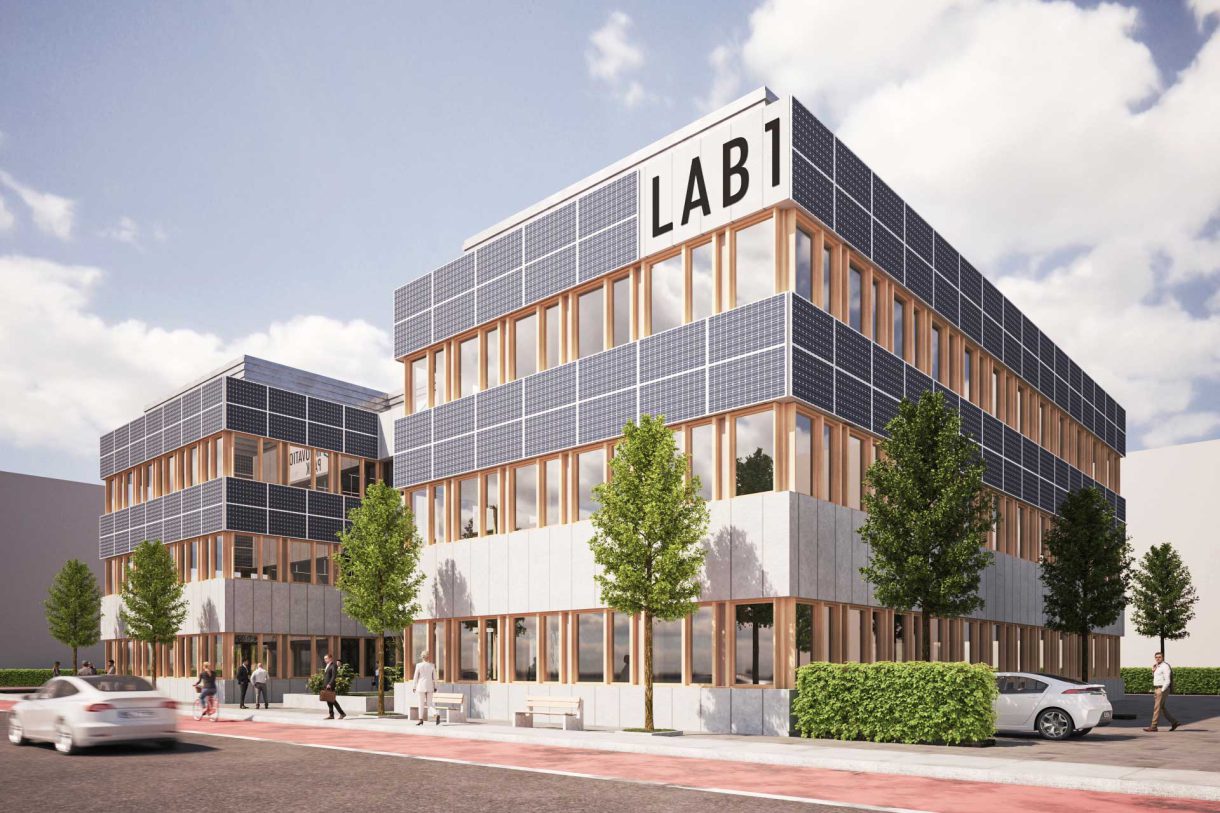Mainz Innovation Park: medical technology company Lifecare becomes the first tenant

The first tenant for LAB 1, the first building at Mainz Innovation Park, can now be revealed: the Norwegian medical device company Lifecare AS, headquartered in Bergen, has signed an LOI (letter of intent) in respect of some 1,000 square metres of laboratory and office space. In doing so, the company is sending a strong signal for the new development project at the entrance to Mainz.
Lifecare specialises in implantable microsensors using nanotechnology, e.g. for measuring blood sugar. Lifecare plans to move into the ground floor of LAB 1 as early as the end of 2024, meaning that a third of the space at Mainz Innovation Park has already been reserved.
Construction poised to begin, with plans for an additional laboratory and office building
Construction work will get under way this year! ‘We are on the home stretch with the planning application and will submit it at the end of September,’ emphasise F. Albrecht Graf von Pfeil, Managing Director of J. Molitor Immobilien, Edmund Schmitz, Managing Director of G.L. Kayser and Uwe Borgmann, Managing Director of IGM. ‘Depending on the weather, the construction site access road could be available by the end of 2022 so that we can get started on the plots.’
For the investors, who are also in discussions with other companies and research institutes considering a lease, one thing is certain: in order to take advantage of the momentum for Mainz, interested companies must now also be provided with specific offers, with clear timelines, as quickly as possible. LAB 1, which boasts a total area of around 3,000 square meters, is just the first step. Molitor, G.L. Kayser and IGM are already working on detailed plans for another office and laboratory building at Mainz Innovation park, with planning permission also set to be submitted this year
Sustainable building technology
We attach particular importance to the topic of sustainability, as is reflected in the building concept for LAB 1: energy will be supplied in an environmentally friendly manner by means of geothermal power and low-temperature radiant heating with passive cooling, thereby exceeding statutory energy efficiency requirements.
Photovoltaic modules on the building are used for further regenerative building services. In addition, the site will feature a modular solar carport, whose self-generated electricity can be used both to charge electric vehicles and to supply the building with power. To improve the microclimate, the roof areas of LAB 1 will be greened as extensively as possible. A resource-saving rainwater harvesting system on the roof will help to relieve pressure on the drainage systems and contribute to the passive cooling of the building.








